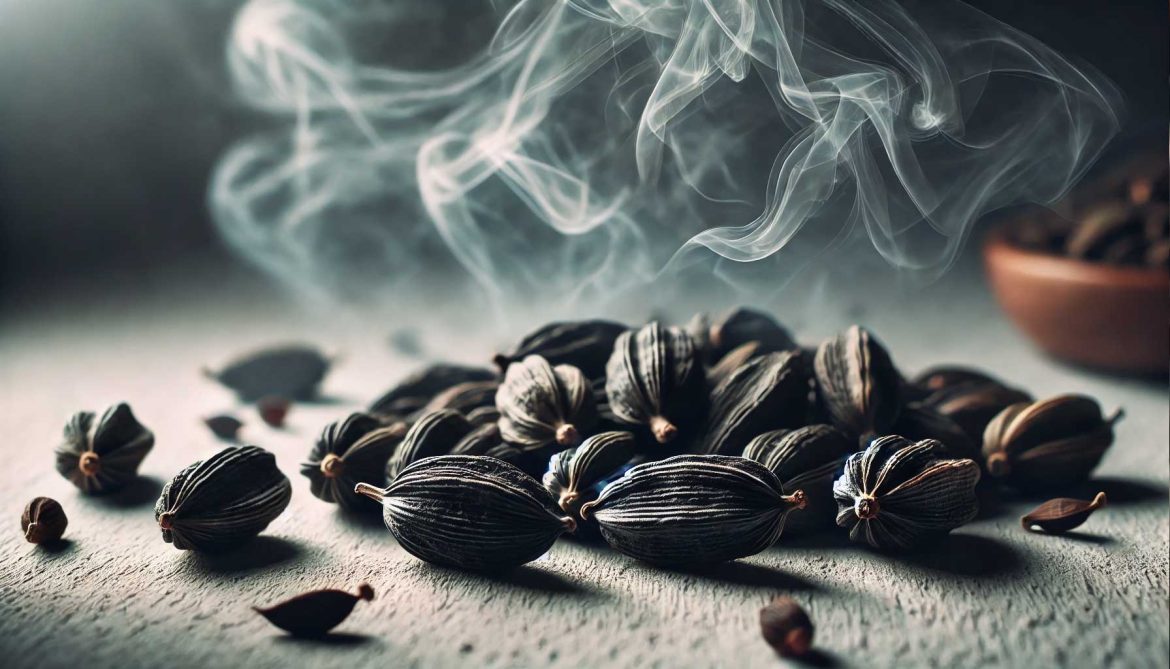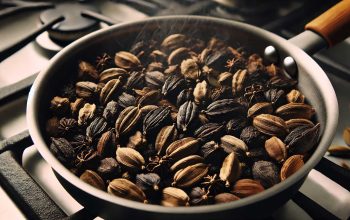Black cardamom, also known as the “queen of spices,” has captivated culinary and medicinal enthusiasts for centuries. Its deep, smoky flavor and aromatic properties make it a staple in both traditional remedies and modern kitchens. This blog delves into the fascinating journey of black cardamom, from its ancient origins to its versatile uses in today’s world. We will explore its history, unique qualities, culinary applications, and health benefits, offering practical tips to incorporate this incredible spice into your cooking routine.
What Is Black Cardamom?
Black cardamom is the seed pod of the plant *Amomum subulatum*, native to the Himalayan regions of Nepal, Bhutan, and northern India. These pods are larger and darker than their green counterpart, with a distinctive smoky aroma. This characteristic flavor comes from the drying process, where the pods are smoked over an open flame.
The Distinctive Features of Black Cardamom
Unlike green cardamom, which is known for its sweet and delicate flavor, black cardamom offers a bold, earthy taste with hints of menthol and camphor. The pods are often used whole to impart flavor during the cooking process and are typically removed before serving.
Historical Significance of Black Cardamom
Black cardamom has been treasured for thousands of years. In ancient times, it was used not only for its culinary potential but also for its medicinal properties. It was traded along the Silk Road, connecting the East and West, and held in high regard in Chinese, Indian, and Middle Eastern traditions.
Traditional Remedies and Uses
Black cardamom was often employed in herbal teas and concoctions to treat respiratory issues, digestive disorders, and oral health problems. The pods were believed to cleanse toxins from the body and enhance vitality.
Culinary Applications in Modern Kitchens
Black cardamom has found its way into a variety of modern dishes, enhancing their depth and aroma. Its robust flavor pairs exceptionally well with rich and hearty recipes. Let’s explore some ways to use black cardamom in everyday cooking:
- Curries: Adding whole black cardamom pods to curries intensifies the flavor profile, especially in dishes with a tomato or onion base.
- Rice Dishes: Infuse basmati rice with black cardamom for a fragrant biryani or pulao.
- Stews: The smoky notes complement meaty stews and lentil soups beautifully.
- Beverages: Brewed in tea or added to spiced hot drinks, black cardamom offers a warm and invigorating twist.
Health Benefits of Black Cardamom
Black cardamom is not only a culinary treasure but also a powerhouse of health benefits. Let’s examine its impact on wellness:
| Benefit | How It Helps | Common Uses |
|---|---|---|
| Digestive Health | Improves metabolism and alleviates stomach discomfort | Used in digestive teas and spice blends |
| Respiratory Support | Relieves congestion and improves breathing | Added to herbal remedies for colds |
| Detoxification | Flushes out toxins and promotes kidney health | Included in cleansing diets and herbal infusions |
Tips for Using Black Cardamom
For those new to black cardamom, it’s essential to know how to use it effectively. Here are some expert tips:
- Use Whole Pods: The pods should be added whole during cooking and removed before serving to avoid an overpowering taste.
- Pair It Right: Black cardamom works best with savory dishes, particularly those featuring meat, lentils, or beans.
- Grind for Intensity: When a more intense flavor is desired, grind the seeds into a powder and use sparingly.
“A single pod of black cardamom can transform a mundane dish into a culinary masterpiece with its smoky and earthy aroma.”
Where to Buy and Store Black Cardamom
Black cardamom can be found in specialty spice stores, Indian groceries, and online marketplaces. Choose pods that are plump, dark, and fragrant. While proper storage extends its shelf life, this post focuses more on its applications and benefits.
Conclusion
Black cardamom’s journey from ancient remedies to modern kitchens highlights its versatility and enduring appeal. Whether you’re seeking bold flavors for your recipes or natural solutions for better health, black cardamom is a spice worth exploring. With its rich history and multifaceted uses, it truly deserves a spot in every kitchen.

FAQs About Black Cardamom
1. Can black cardamom be used as a substitute for green cardamom?
Yes, but with caution. Black cardamom’s smoky flavor can overpower recipes that call for the sweeter taste of green cardamom. Use sparingly in desserts.
2. Is black cardamom suitable for tea?
Absolutely. It adds a bold and warming note to chai and other spiced teas.
3. How is black cardamom used in medicinal applications?
Traditionally, it is used in teas and infusions to aid digestion, improve respiratory health, and detoxify the body.
4. What are the best dishes to pair with black cardamom?
Black cardamom works wonders in biryanis, curries, stews, and even smoked meats.
5. Can black cardamom be eaten raw?
It is not typically eaten raw due to its intense flavor. It’s best used during cooking or brewing.
6. Does black cardamom lose its flavor over time?
Yes, like most spices, black cardamom can lose potency over time. Store it in an airtight container away from direct sunlight.
7. How does black cardamom benefit the respiratory system?
Its warming properties help relieve congestion and improve airflow, often used in herbal remedies for colds.
8. Can black cardamom be used in baking?
It can, but sparingly. It adds a unique depth to breads, cakes, and cookies.
9. How does black cardamom enhance meat dishes?
Its smoky flavor pairs exceptionally well with rich, fatty meats, balancing and elevating the overall taste.
10. What makes black cardamom different from green cardamom?
The drying process, size, and flavor profile distinguish black cardamom, making it smokier and more robust compared to the sweet and floral green cardamom.



